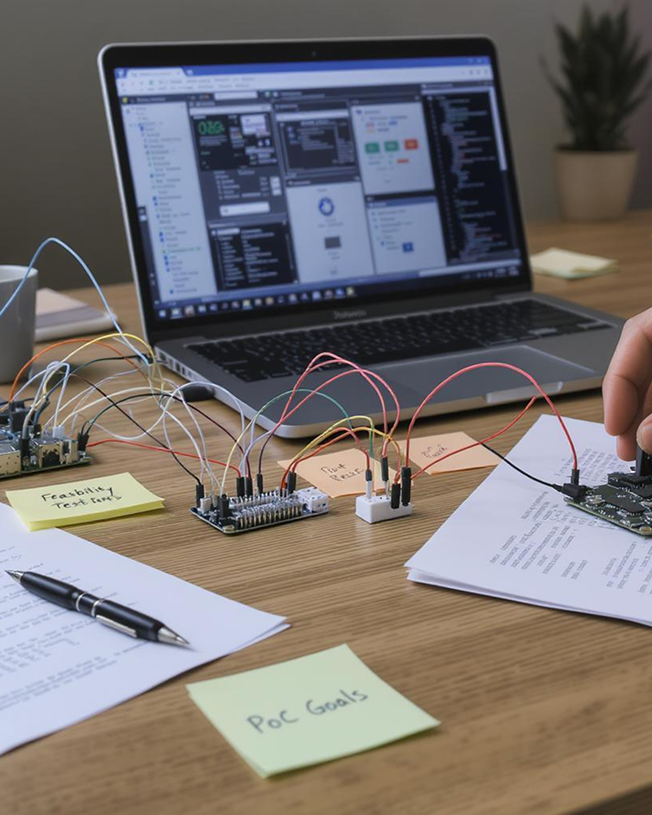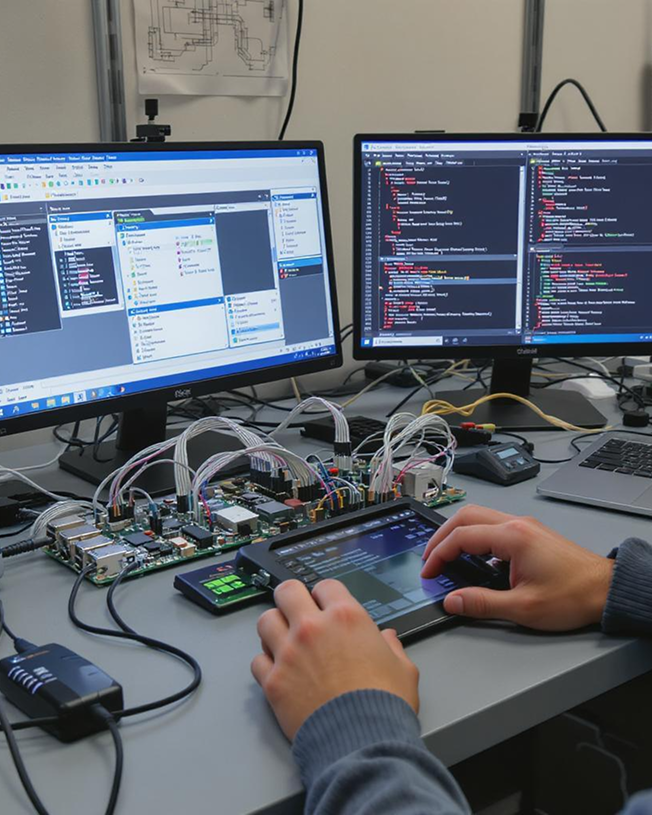Nawatech specializes in embedded software development, helping businesses create reliable and efficient software solutions for their hardware. Our expertise ensures seamless integration, optimized performance, and compatibility with various embedded systems and communication protocols.
Get a QuoteWe cover every aspect of IoT development to ensure your business operates smarter, faster, and more efficiently.
Creating optimized software for embedded systems to ensure efficient hardware operation. We are experts in working with different hardware and CPU architectures.
Building software layers that enable seamless interaction between firmware and application software.
Implementing wired and wireless communication protocols like UART, SPI, I2C, Bluetooth, WiFi, LoRaWAN, as well as industrial protocols such as Modbus, CAN, Profibus, EtherCAT, and OPC UA for seamless integration in industrial automation systems.
Conducting comprehensive software validation, debugging, and performance analysis for embedded applications.



We follow a step by step process, from planning to deployment and optimization. To ensure our deliverables are scalable and secure IoT solutions that fit your needs.
The initial phase involves collecting and evaluating requirements, including functional specifications, performance expectations, and hardware limitations. Additionally, a feasibility study is carried out to determine technical and operational viability.
Using the collected requirements, an architecture is developed to define the system's structure. This includes designing the software framework, specifying interfaces, modules, and algorithms necessary to achieve the desired functionality.
At this stage, the core programming is implemented using languages such as C, C++, Python and Golang. Embedded software development includes writing device drivers to facilitate communication between the software and hardware peripherals, ensuring seamless interaction and functionality.
After the embedded software undergoes thorough verification and validation, it is loaded onto the designated hardware platform. This process includes setting up and configuring the embedded system for operational use in real-world environments.
Embedded software development involves creating application-level software that runs on embedded systems, typically on microprocessors (MPUs) and mini PCs, often using operating systems like Linux, Windows IoT.
Embedded software runs on top of an operating system, providing high-level functionalities, while embedded firmware is low-level code that directly interacts with hardware.
What are the key components of embedded software?
Components include the operating system, middleware, drivers, application logic, communication protocols, and security modules.
Middleware acts as a bridge between hardware drivers and high-level applications, handling communication protocols and device interfacing.
Testing involves unit tests, integration tests, hardware-in-the-loop (HIL) testing, functional validation, and debugging using emulators or simulators.
Yes, embedded software often runs on single-board computers (SBCs) like Raspberry Pi, leveraging OS-based environments.
Protocols include MQTT, HTTP, Modbus, SNMP, OPC-UA, CAN, industrial Ethernet, and Bluetooth, depending on the application.
Yes, through Over-The-Air (OTA) updates, allowing remote bug fixes and feature enhancements.
Common tools include GCC, Visual Studio Code, Docker for containerization, and various debugging tools.